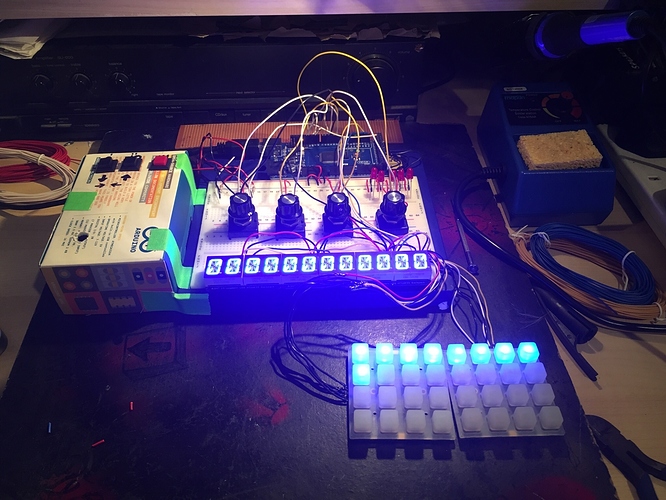I believe it's possible to send any parameters you want.
My design should allow for 80 cc's on the rotary encoders and then 32 more on the glowing buttons.
I also have a shift button tho I am unsure what I am using that for at this point. I'm basically looking to have a control surface which is super open ended to allow control of a wide variety of patches.
So I want to send all the parameters on patch open and then manipulate them from there.
I was thinking it would be cool if I can use some of the squishy buttons to recall presets. At which point sending the parameter values would be really important.
This is all the UI bits. Demonstrating proof of concept on the Arduino side. Lots of coding still to be done but I think I am near to being in a position to try and physically connect the two soon(when full time job and family commitments allow)


 the cheap oleds are so cheap that one wonders about using 4 displaying oleds for info about parameter or LFO, OSC info, etc..
the cheap oleds are so cheap that one wonders about using 4 displaying oleds for info about parameter or LFO, OSC info, etc..  …the module use 4 74hc165 shift in registers + SPI (4 wires, VDD, GND) to read out the encoders states. I don't know how there doing it, but it working great with their MIOS fw. Maybe someone which is more skilled in programming can to a look at their source code and find out how it's done.
…the module use 4 74hc165 shift in registers + SPI (4 wires, VDD, GND) to read out the encoders states. I don't know how there doing it, but it working great with their MIOS fw. Maybe someone which is more skilled in programming can to a look at their source code and find out how it's done.
